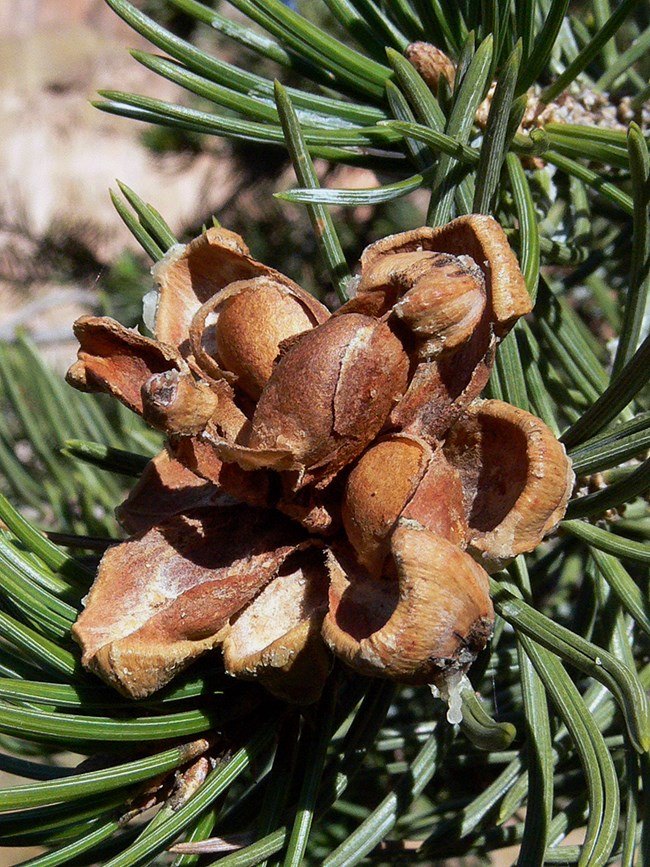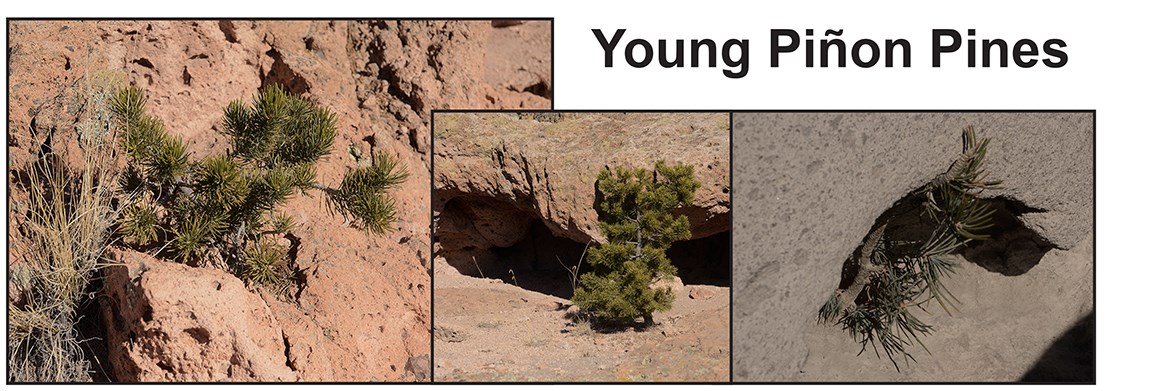
Photo by Sally King Stop 3: The late 1990’s and early 2000’s were a time of sustained drought. In some localities, including Tsankawi, as many as 97% of the adult piñon pines died. Without enough moisture, the trees could not produce excess sap to ward off the killing effects of an explosion in the native pine bark beetle population. For a decade, dead brown piñon trees dominated the viewshed. Today, only mostly decomposed skeletons remain from this mass die-off and numerous baby piñon pines have appeared scattered amid the graveyard of their predecessors. Only time will tell how many of these pines will live long enough to provide a life supporting crop of nuts. A piñon pine is approximately 75 years old before it bears its first fruits.

Photos by Sally King |
Last updated: January 16, 2022
